After a chilly night bundled up in several layers of blankets, we woke up to a clear and bright morning. Our host was already busy in the yard feeding chicken and piling up hay on the barn for winter. His wife brought us some hot chai and more bread for breakfast and with that we were ready to face a new day. From the little we understood of the man who dropped us here the previous night, we took it that he would pick us up in the morning and take us back to the border post. So we waited in the yard, watching passing donkeys and bulls head-butting in the nearby fields. We could see the border post at a distance from the yard and could just walk there ourselves, so we were not worried.
We had not had a chance to convert any money due to our unconventional border crossing the previous evening, so paid for our bed and board with the all the remaining Tajiki Somoni we possessed and though we were just a tad bit short, the family did not make a fuss about it
.
In the meantime our host had changed into his "smart" clothes. He was also wearing a fancier version of the tall white felt hat (with silver embroidered design) and seemed headed to somewhere important. When he enquired about our plans, we indicated we were headed back to the border post to find transport to the city of Osh, around 300 kms away (or any other city in that direction). On hearing that, he gestured that we should follow him. He was heading to Daroot Korgon, a name we recognized from having seen on the map as a town on the main road to Osh. We had no idea how he was planning to get there, we did not see any motorized form of transport around the house, but following him seemed like a better option compared to waiting for some random truck to turn up. So we followed him as he made his way towards a small trailer camp close to the border post. There was indeed a small truck there and after a quick chat with someone in one of the trailers, he gestured for us to get in at the back of the truck - along with vegetables! We hauled our packs in and made ourselves comfortable on sacks of potatoes
. He himself sat next to the driver and we were off!
In the far southern arm of Kyrgyzstan lies the heavily glaciated Pamir Alay range, a jagged 500 km long seam running from Samarkhand to Xinjiang. The road from the Karamyk border to Daroot Korgon (and beyond to Sary Tash), runs through the Alay Valley, offering spectacular views of the mountains all around. Taking in the panorama through the back of a speeding truck, we could not have been happier with this introduction to Kyrgyzstan!
Traffic was sparse and the driver once pulled over to exchange 'salaams' with the occupants of a truck going in the opposite direction. He also made a brief stop at the only gas station on that stretch to fill petrol in a couple of empty plastic bottles. We were still wondering about that when he stopped further down the road and delivered it to a stranded truck (which presumably had run out). Evidently he had received a call on his mobile for assistance and was helping out
.
When we got to Daroot Korgon, it was humming with activity. People were going about their morning chores, getting to work, taking children to school and doing their shopping. Most men had a tall white hat on (just like our host). Women were dressed smartly, many in western clothes and sans head-scarf. You could immediately see the contrast with Tajikistan, where few if any women was seen in public without a head-scarf.
Our host asked around about transport to Osh and found a share-taxi that was ready to take us, but only after more passengers were gathered. Having arranged for our onward transport, our host and the driver bid goodbye and went their way. The share-taxi driver accompanied us to the local bank so we could get some Kyrgyz Som. Then waiting game started - the driver hung out with his buddies and we cooled our heels drinking coffee in a nearby cafe. Minutes turned to hours. It appeared nobody else from Daroot wanted to go to Osh that day!
We were not sure exactly what transpired but we were then asked to transfer our bags to a different car and join a different driver and a young woman
. It seemed like they were not really planning to make a trip to Osh that day, but since there were two paying customers, they were going to take us there and take care of pending business in the city. Which was great for us, since we were not looking forward to spending another night without making more progress beyond the border. (Besides people watching, Daroot had few things to offer to a visitor). But this sudden plan also meant we were going to detour to the woman's home so she could gather her stuff for the trip. As we drove to her village several kilometers away, we made several stop as she rushed from home to home running errands - delivering what she had picked up in Daroot, conveying messages, picking up warm bread for the trip etc. When we reached her home, we found the entire family, kids included, digging up the potato patch in the backyard and filling a sack. Presumably a sack of potatoes would fetch a better price in Osh compared to the local market. After waiting for several minutes, the woman returned with her travel bag and finally we were on the road to Osh
.
The Alay valley is the main access point for mountaineering expeditions into the high Pamirs and the stretch of road from Daroot Korgon to Osh passes some of the most spectacular scenery. The range includes 7495m Koh-i-Samani (formerly Pik Kommunizma, the highest point in the former USSR) and 7134m Koh-i-Garmo (formerly Pik Lenin). The small dusty town of Sary Moghul offers the best views of Pik Lenin, and while there was heavy cloud cover on this particular day, driving alongside the range provided some surreal vistas.
There are few towns and little traffic on the long straight roads that stretch endlessly into the horizon, so vehicles drive at insane speeds in these parts. But they do need to watch out for frequent roadblocks in the form of large herds of sheep or cattle being moved from pasture to pasture guided by Kyrgyz herdsmen on horses (ably aided by dogs). Getting through some of the larger herds involves a lot of maneuvering and honking and can take several minutes
.
We stopped for a while at the village of Sary Tash for our young woman to run more errands and as we waited in the car we met Frank (from Netherlands) who was on a multi-week cycling vacation in Kyrgyzstan. He was just resting by the roadside after a particularly long uphill stretch. We had encountered many such cyclists on these long mountainous roads and it was fascinating to watch them tackle these roads on heavily laden bicycles. It must take a particular type of personality to want to inflict this form punishment on oneself!
Past Sary Tash, the road veers north and climbs up through several switchback to get over the 3615m Taldyk Pass. A short rain spell seemed to make the colors in the mountainside even more vivid and we were kept busy with our cameras for the 5+ hours it took to cover the 300 km distance to Osh.
Google Maps Link
Onward from the Kyrgyz border
Wednesday, September 12, 2012
 Osh, Kyrgyzstan
Osh, Kyrgyzstan
Other Entries
-
47No Longer The Capital Of Burma
Aug 0241 days prior Yangon (Rangoon), Myanmarphoto_camera17videocam 0comment 2
Yangon (Rangoon), Myanmarphoto_camera17videocam 0comment 2 -
48A Memorable Sunset
Aug 0439 days prior Bagan, Myanmarphoto_camera36videocam 0comment 1
Bagan, Myanmarphoto_camera36videocam 0comment 1 -
49A Sport Of Alms
Aug 0637 days prior Mandalay, Myanmarphoto_camera17videocam 0comment 2
Mandalay, Myanmarphoto_camera17videocam 0comment 2 -
50Inle Lake
Aug 0835 days prior Nyaungshwe, Myanmarphoto_camera14videocam 0comment 1
Nyaungshwe, Myanmarphoto_camera14videocam 0comment 1 -
51Myanmar Musings
Aug 1033 days prior Yangon (Rangoon), Myanmarphoto_camera3videocam 0comment 0
Yangon (Rangoon), Myanmarphoto_camera3videocam 0comment 0 -
52On Hiatus
Aug 1132 days prior Madurai, Indiaphoto_camera0videocam 0comment 2
Madurai, Indiaphoto_camera0videocam 0comment 2 -
53Monsoon and Mangoes
Aug 2419 days prior Mumbai (Bombay), Indiaphoto_camera0videocam 0comment 4
Mumbai (Bombay), Indiaphoto_camera0videocam 0comment 4 -
54Visa Treasure Hunt
Aug 3112 days prior Delhi, Indiaphoto_camera5videocam 0comment 2
Delhi, Indiaphoto_camera5videocam 0comment 2 -
55Into A New Region
Sep 039 days prior Tashkent, Uzbekistanphoto_camera20videocam 0comment 2
Tashkent, Uzbekistanphoto_camera20videocam 0comment 2 -
56Crossing Into Tajikistan
Sep 048 days prior Bŭston, Tajikistanphoto_camera9videocam 0comment 2
Bŭston, Tajikistanphoto_camera9videocam 0comment 2 -
57First Taste of Tajik Hospitality
Sep 048 days prior Khujand, Tajikistanphoto_camera14videocam 0comment 0
Khujand, Tajikistanphoto_camera14videocam 0comment 0 -
58Over Shakhristan Pass
Sep 057 days prior Panjakent, Tajikistanphoto_camera11videocam 0comment 2
Panjakent, Tajikistanphoto_camera11videocam 0comment 2 -
59Eleven in a Jeep
Sep 066 days prior Panjakent, Tajikistanphoto_camera8videocam 0comment 2
Panjakent, Tajikistanphoto_camera8videocam 0comment 2 -
60Fan Mountains and Marguzor Lakes
Sep 075 days prior Marguzor, Tajikistanphoto_camera16videocam 0comment 2
Marguzor, Tajikistanphoto_camera16videocam 0comment 2 -
61From Remote Mountain Village to Capital City
Sep 084 days prior Dushanbe, Tajikistanphoto_camera9videocam 0comment 2
Dushanbe, Tajikistanphoto_camera9videocam 0comment 2 -
62Independence Day at the Capital
Sep 093 days prior Dushanbe, Tajikistanphoto_camera10videocam 0comment 2
Dushanbe, Tajikistanphoto_camera10videocam 0comment 2 -
63Crossing a Remote Border into Kyrgyzstan
Sep 111 day prior Jirgatol, Tajikistanphoto_camera18videocam 0comment 2
Jirgatol, Tajikistanphoto_camera18videocam 0comment 2 -
64Onward from the Kyrgyz border
Sep 12 Osh, Kyrgyzstanphoto_camera22videocam 0comment 2
Osh, Kyrgyzstanphoto_camera22videocam 0comment 2 -
65Kyrgyzstan's Second Largest City
Sep 131 day later Osh, Kyrgyzstanphoto_camera9videocam 0comment 2
Osh, Kyrgyzstanphoto_camera9videocam 0comment 2 -
66How could you not go to a place called Arslanbob ?
Sep 153 days later Arslanbob, Kyrgyzstanphoto_camera15videocam 0comment 1
Arslanbob, Kyrgyzstanphoto_camera15videocam 0comment 1 -
67The Long Road to Bishkek
Sep 186 days later Bishkek, Kyrgyzstanphoto_camera14videocam 0comment 3
Bishkek, Kyrgyzstanphoto_camera14videocam 0comment 3 -
68Seven Bulls and a Broken Heart
Sep 208 days later Karakol, Kyrgyzstanphoto_camera13videocam 0comment 2
Karakol, Kyrgyzstanphoto_camera13videocam 0comment 2 -
69At Song Kul Lake - An Unforgettable Experience
Sep 2210 days later Kochkor, Kyrgyzstanphoto_camera23videocam 0comment 0
Kochkor, Kyrgyzstanphoto_camera23videocam 0comment 0 -
70Back to Bishkek
Sep 2311 days later Bishkek, Kyrgyzstanphoto_camera0videocam 0comment 5
Bishkek, Kyrgyzstanphoto_camera0videocam 0comment 5 -
71Almaty
Sep 2614 days later Almaty, Kazakhstanphoto_camera16videocam 0comment 1
Almaty, Kazakhstanphoto_camera16videocam 0comment 1 -
72Day Trip To Turkistan
Sep 2816 days later Shymkent, Kazakhstanphoto_camera8videocam 0comment 1
Shymkent, Kazakhstanphoto_camera8videocam 0comment 1 -
73The Border Crossing You Dont Want To Repeat
Sep 2917 days later Tashkent, Uzbekistanphoto_camera5videocam 0comment 4
Tashkent, Uzbekistanphoto_camera5videocam 0comment 4 -
74Some History Lessons
Oct 0220 days later Tashkent, Uzbekistanphoto_camera5videocam 0comment 2
Tashkent, Uzbekistanphoto_camera5videocam 0comment 2 -
75From Slave Market to Museum
Oct 0422 days later Khiva, Uzbekistanphoto_camera14videocam 0comment 1
Khiva, Uzbekistanphoto_camera14videocam 0comment 1 -
76How Much Renovation is Just Right?
Oct 0624 days later Bukhara, Uzbekistanphoto_camera32videocam 0comment 3
Bukhara, Uzbekistanphoto_camera32videocam 0comment 3 -
77Timur Land
Oct 0927 days later Samarkand, Uzbekistanphoto_camera28videocam 0comment 1
Samarkand, Uzbekistanphoto_camera28videocam 0comment 1 -
78Goodbye To The 'Stans
Oct 1028 days later Tashkent, Uzbekistanphoto_camera6videocam 0comment 2
Tashkent, Uzbekistanphoto_camera6videocam 0comment 2 -
79Still In Asia Or Is This Europe?
Oct 1331 days later Baku, Azerbaijanphoto_camera28videocam 0comment 1
Baku, Azerbaijanphoto_camera28videocam 0comment 1 -
80Foothills Of The Caucasus Mountains
Oct 1432 days later Lahic, Azerbaijanphoto_camera16videocam 0comment 2
Lahic, Azerbaijanphoto_camera16videocam 0comment 2 -
81Vikings Originally Came From Azerbaijan?
Oct 1634 days later Sheki, Azerbaijanphoto_camera13videocam 0comment 1
Sheki, Azerbaijanphoto_camera13videocam 0comment 1 -
82An Azerbaijani Family
Oct 1634 days later Sheki, Azerbaijanphoto_camera0videocam 0comment 3
Sheki, Azerbaijanphoto_camera0videocam 0comment 3
Comments
2025-05-22
Comment code: Ask author if the code is blank

 Osh, Kyrgyzstan
Osh, Kyrgyzstan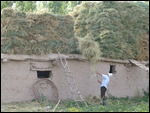
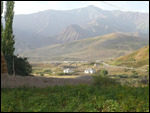
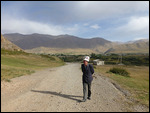
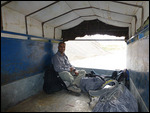
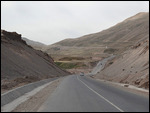
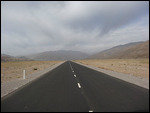







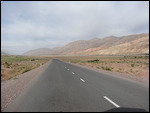

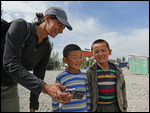
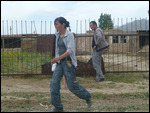
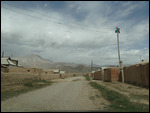
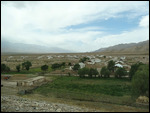
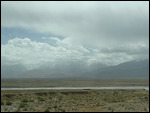
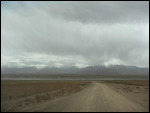
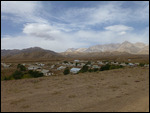
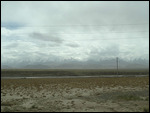
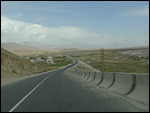
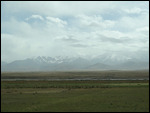
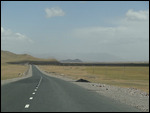
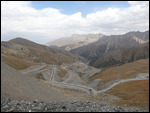
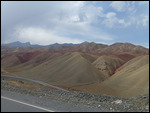

Ramesh
2012-09-30
I can see V at the back of the truck, but where are the potatoes. Presumably you both finished off a few sackfuls after a strict diet of bread and grapes for a week or so !!
Do you still see Soviet influences in the stans or has Russian been forgotten ?? If I am not mistaken the Russians did do some forced displacements to co mingle the populations - wonder what happened when the Soviet Union broke up.
parleusted
2012-10-01
You are right about large scale migration of Russians into the stans during Soviet times. For instance we read that in the 1930s and 1940s, they were sent in large numbers to work in the new industrial towns and labour camps in Kazakhstan. Then in the 1950s, there was another wave when Khrushchev decided to cultivate wheat on a large scale in the northern steppes. They were also sent to Uzbekistan to transform large tracts of arid land into cotton fields. But as the stans became independent, ethnic Russians moved out in droves from all the stans. Today they are a small minority in the big cities (Tashkent, Bishkek, Dushanbe) but few are seen outside the urban areas. Only in Kazakh did we notice a significant Russian presence. Here they form a significant part of the population and many northern cities are Russian majority.
As for the Russian language, it is still widely spoken and understood in all the stans and serves as the link language between the various ethnic groups within a country. From what we heard, Russian is still taught in schools and is a prerequisite for higher education. For instance most technical books have not been translated into Tajik, Kyrgyz, Kazahk etc, so if you want to get a technical degree, you need to have a good grasp of Russian.